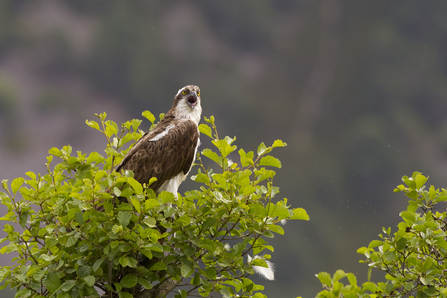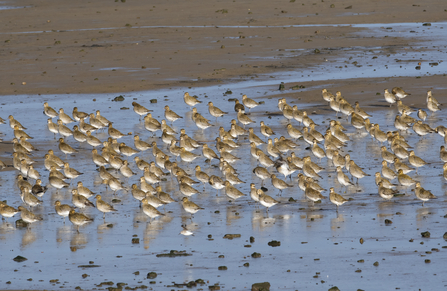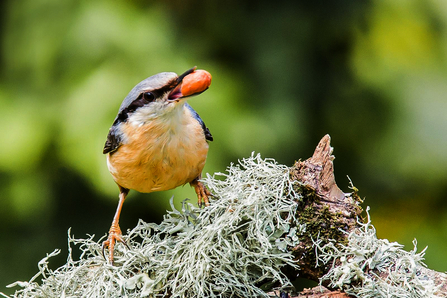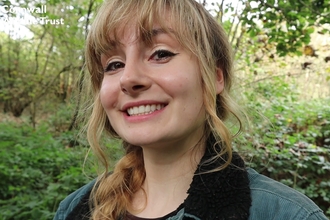With the breeding season over, this time of year is a moment of departure for some of our migratory birds. But as we head into autumn in September and begin to see the first signs of colours changing, it is still a wonderful time to enjoy wildlife.
Here are some of September's highlights...

Osprey on tree. Image by Peter Cairns
Osprey
The Osprey was once a very rare bird in the UK, having been targeted by egg collectors. Conservation efforts have seen populations rise again, and these days it is a regular sight to see Ospreys in Cornwall as they pass through on migration. The stark contrast between their white bellies and dark-brown wings makes them easy to recognise, particularly when they plunge into the water feet-first to catch a fish.

Atlantic bluefin tuna. Image by Bill Hall
Atlantic bluefin tuna
Atlantic Bluefin Tuna are giants of the fish world. These torpedo-shaped fish can reach 40mph in speed despite weighing more than 250kg – about the same as 3 men! They became an extremely rare sight through the latter half of the 20th century after being fished near to extinction but began reappearing in the UK in 2014. Now, they’re observed more frequently in our Cornish waters during late summer and autumn as they chase shoals of mackerel, sardines and herring along our coastline.

Ben Watkins
Cabilla & Redrice Woods
Take a trip to one Cornwall’s largest, and possibly finest, woodlands this month - Cabilla & Redrice Woods. Warm evenings in August and September are great times to go searching for bats. Ancient trees, mine adits and coppice woods make this nature reserve a happy hunting ground for species like the Greater and Lesser Horseshoe Bat. A relatively cheap bat detector, as well as the Field Studies Council’s bat guide, will also enhance your experience, according to our East Cornwall Reserves Officer, Stuart. Beware of the midges though!

Golden plover. Image by Adrian Langdon
Arrivals and departures
With the breeding season over, many birds are now travelling south to their wintering grounds. As swallows gather on lines ready to depart, birds from the north such as ducks, plovers and thrushes begin to arrive. Nowhere is the mass migration more evident that the estuaries, where large flocks of sandpipers and other wading birds stop by to feed up, ready for the long journey. At this time of year, we may see unusual bird species turn up which have been swept off course.

Nuthatch. Image by Ian French
Nature's bounty
All across Cornwall, a grand wild harvest is taking place. Birds and other animals are turning their attention from their summer diet of insects to the bounty of nuts and berries (like elderberries and hazelnuts) erupting from the hedges. Some years we will get a ‘mast year’, where the right conditions trigger one or more species of tree to produce their seeds on a massive scale. The glut of available food will ensure not all of it gets eaten, leaving some seed to germinate into new trees.
Speckled wood on wayfaring tree © Claire Lewis
Speckled wood
You can still see butterflies flying around on warm days in late summer and early autumn. Look for speckled wood butterflies flying in sunny glades and along rides in woodland, or basking in pools of sunshine. The speckled wood prefers the dappled sunlight of woodland rides and edges, hedgerows and even gardens. Despite declines, its range has spread over recent years.
Hovering Migrant Hawker dragonfly. Image by Neil Phillips
Migrant hawkers
Migrant hawkers are one of the later dragonflies to emerge as adults in the summer, and you may see them still flying as late as November. They breed in pools of standing water but look for the adults flying in gardens, woodland and along hedgerows too. As a group, hawkers are the largest and fastest flying dragonflies; they catch their insect-prey mid-air and can hover or fly backwards.
Dig deeper!
Explore a blog to find out more about wildlife and wild places...




